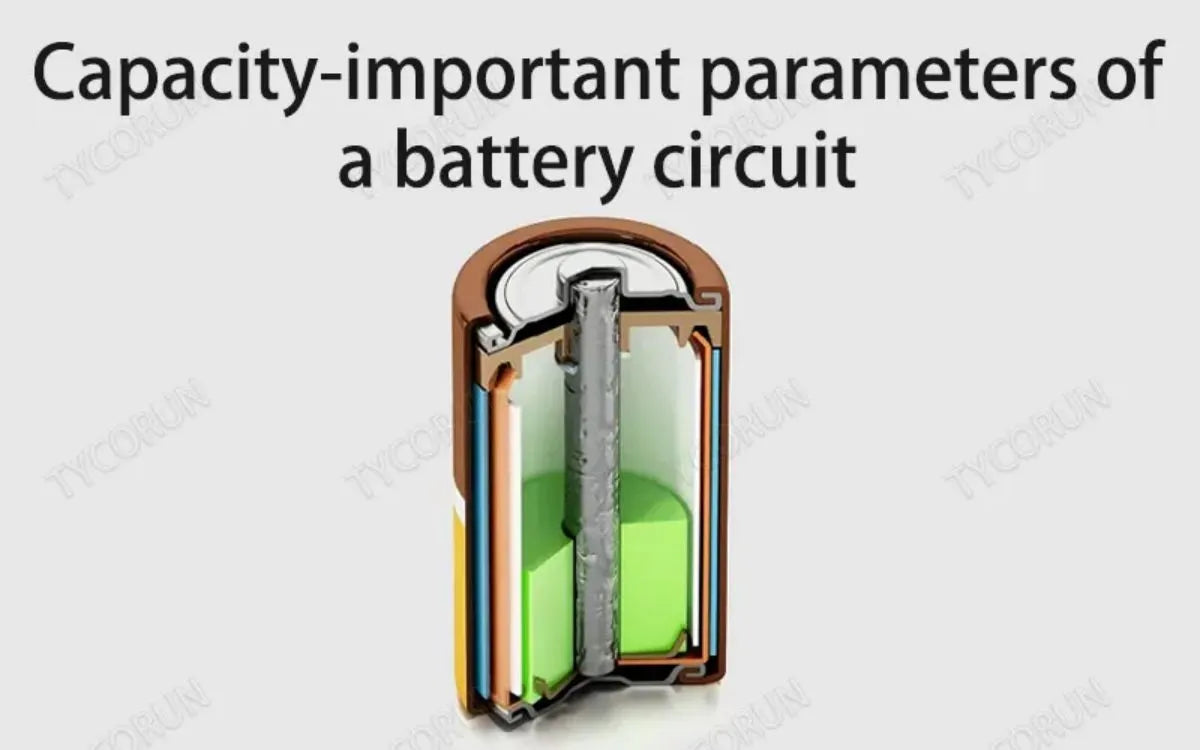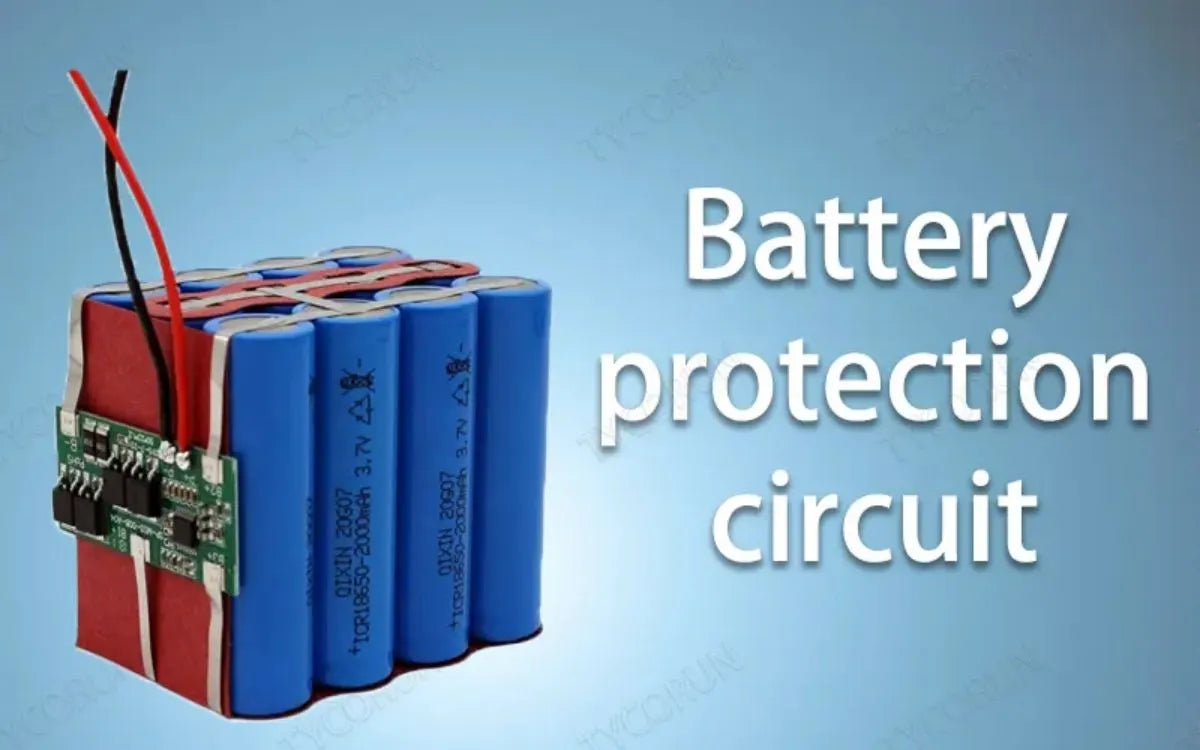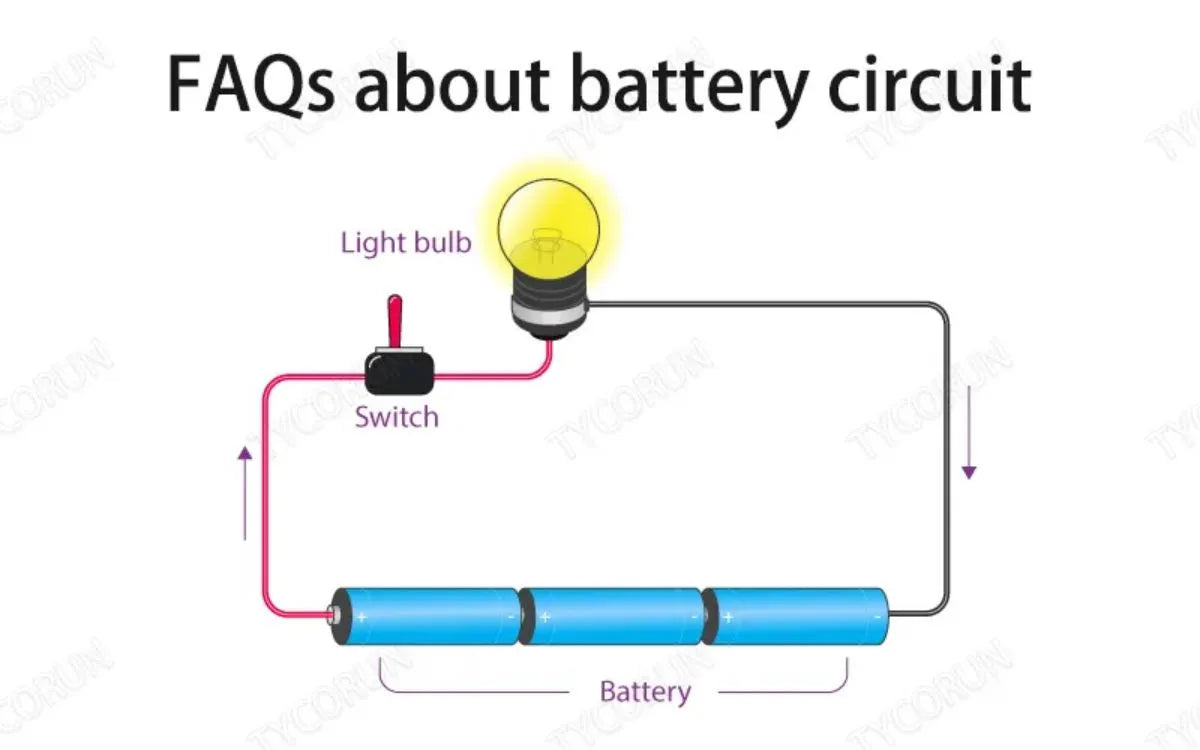
Main content:
- What is an electric circuit
- Does a battery need circuit? What is the circuit of battery?
- Is a battery an electrical circuit? What's the difference between circuit and battery?
- What are the parts of a battery circuit?
- What are the important parameters of a battery circuit?
- How does battery circuit work
- How do you wire a battery circuit?How do you make a battery circuit?
- What is a battery protection circuit?
- How does a battery work in a series circuit?
- Basics of battery circuit design
- FAQ
Electric circuits form the backbone of our modern world, enabling the flow of electric current to power various devices. Let’s explore their components, functionality, and design considerations. By understanding battery circuit, we will be equipped to create efficient and reliable circuits for electrical systems. Let's embark on a detailed exploration of battery circuits.
1. What is an electric circuit
An electric circuit is a closed-loop pathway that allows electric current to flow and comprises interconnected components such as a power source, conductive elements, and load devices. It is capable of transmitting electrical energy to power devices and systems.
2. Does a battery need circuit? What is the battery circuit?
A lot of people wonder what exactly is a battery circuit. But in fact, a battery itself is not a circuit but rather a power storage device that can supply electrical energy.
However, to harness this energy effectively, a battery like a 12v battery requires a circuit to complete the pathway for current flow. The battery circuit typically includes components like wires, switches, resistors, and loads.
3. Is a battery an electrical circuit? What's the difference between circuit and battery?
While a battery is not an electrical circuit as mentioned above, it is an integral part of a circuit as the power source. The circuit encompasses the entire pathway for current flow, including the battery. The battery, on the other hand, is a device that stores and provides electrical potential energy. It transforms stored chemical energy into electrical energy when a circuit is formed.

4. What are the parts of a battery circuit?
A battery circuit comprises several essential components that work together to facilitate the flow of current and power devices.
These components include:
- Battery: Provides electrical potential energy. It converts chemical energy into electrical energy and consists of one or more battery cells.The most common battery type is lithium battery.
- Wires: Conductive pathways for current flow. They connect the battery to other components in the circuit, enabling the flow of electrons.
- Switches: Control the circuit's opening and closing.
- Resistors: They control the amount of current flowing through the circuit and adjust voltage levels as needed.
- Loads: They convert electrical energy into other forms, such as light, mechanical motion, or data processing. It includes devices that use electrical energy like light bulbs electrical devices, and motors.
5. What are the important parameters of a battery circuit?
Several parameters play a crucial role in battery circuit design and operation. Understanding these parameters is essential for creating an efficient and optimized circuit.
The key parameters includes:
- Voltage: The difference in electrical potential that the battery supplies. It determines the force that drives the flow of current in the circuit. Volts (V) are used to measure voltage.
- Current: Electric charge flowing through a circuit is known as current. It establishes the rate at which electrical energy is delivered to the load and is expressed in amperes (A).
- Resistance: It is measured in ohms (Ω) and affects the amount of current flowing through the circuit. Resistance can be inherent in components or intentionally added to control current flow.
- Capacity: The amount of electrical energy a battery can store. It is measured in ampere-hours (Ah) and determines how long the battery can power a load.

6. How does battery circuit work
① The circuit when battery charging
The battery circuit connects the battery to an external power source, such as a charger, during the charging process. The circuit ensures a controlled current flow into the battery, allowing it to store electrical energy. The charger supplies a higher voltage than the battery's internal voltage, driving the flow of electrons from the charger to the battery's positive terminal. As the battery charge, the chemical reactions within the battery restore its electrochemical potential.② The circuit during battery discharge
When a battery is discharging, the battery circuit connects the battery to a load device. The circuit facilitates the flow of current from the battery to the load, supplying the required electrical energy for device operation.
The chemical reactions within the battery create a potential difference between its terminals, and the circuit allows electrons to flow from the negative to positive terminals, powering the load. Chemical reactions deplete the available energy as the battery discharges.
7. How do you wire a battery circuit?How do you make a battery circuit?
To wire a battery circuit, follow these steps:
- Gather the necessary components: batteries, wires, switches, resistors, and loads.
- Connect the positive terminal of the battery to the load device. This is where the current starts flowing.
- Connect the negative terminal of the battery to the circuit's return path. This completes the loop for the current flow.
- Complete the circuit by connecting the load device to the return path. Ensure all connections are secure to maintain a continuous flow of current.
- Battery circuit construction involves careful planning and consideration of factors such as the type of battery, voltage requirements, current ratings, and safety precautions. Adequate insulation, appropriate wire gauges, and secure connections are essential to prevent electrical hazards and ensure efficient performance.
8. What is a battery protection circuit?
The lithium battery is protected by a battery protection circuit from potential risks like overcharging, overdischarging, or excessive current flow. It includes a number of safety features, temperature sensors, current limiters, and voltage regulators. These components control and monitor the battery's charging and discharging processes, ensuring safe and optimal operation.

9. How does a battery work in a series circuit?
When batteries are connected in series, their positive terminal links to the negative terminal of the adjacent battery. This configuration combines the overall voltage output while maintaining the same current.10. Basics of battery circuit design
Designing an efficient battery circuit requires careful consideration of various factors. These include the voltage requirements for the load, load characteristics, current ratings of components, safety measures, and battery life. Proper component selection, circuit layout, and attention to electrical safety guidelines are crucial for the optimal performance and longevity of the circuit.
During the design process, assess the power requirements of the load and select a battery with sufficient voltage and capacity. Consider the expected discharge rate, battery chemistry, and environmental conditions. Ensure that the battery circuit components, such as wires, switches, and resistors, can handle the expected current flow without overheating or voltage drop.

11. FAQ
① Is a battery a simple circuit?
No, a battery circuit is not a simple circuit. It is a power source that needs an entire circuit to allow an electric current to flow through it. The battery, along with other components like wires, switches, and loads, form the complete circuit.② What is battery in current?
The "battery" in this term refers to a source of electrical potential energy that can supply a continuous flow of charge carriers, enabling current to flow through a circuit. The battery acts as the driving force behind the current flow.③ Is a battery AC or DC?
Batteries are primarily DC (direct current) sources, supplying a steady flow of electrons in one direction. The positive terminal of a battery always has a higher potential than the negative terminal.
Related articles: what are amps, 18650 rechargeable battery, batteries in parallel vs series